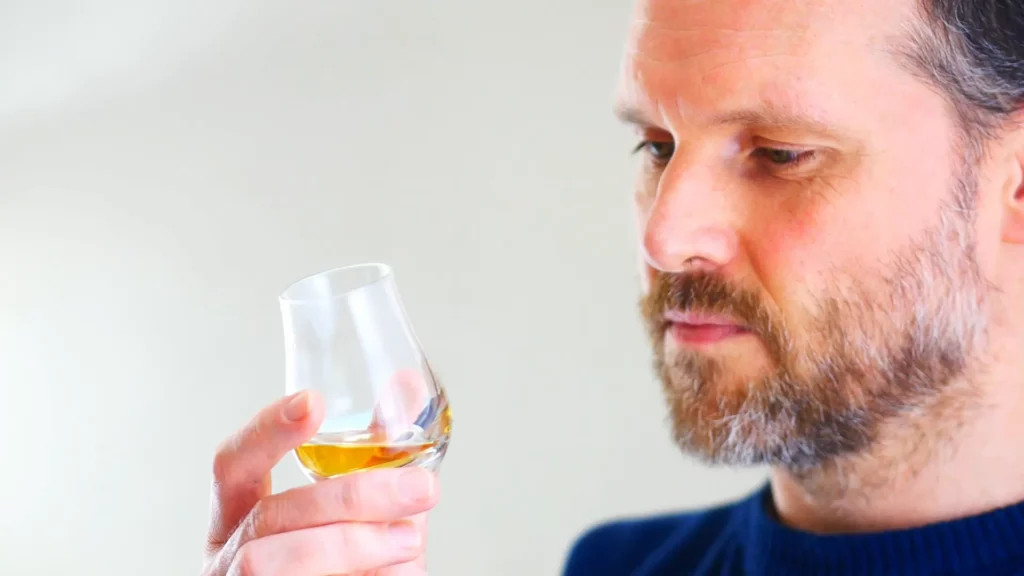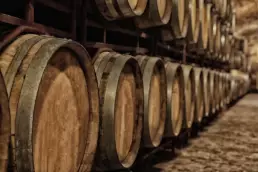Introduction
Whisky is a spirit that is loved by many around the world, from Scotland to Japan. But have you ever stopped to think about how it is made? In this blog post, I’m excited to take you on a journey as we explore the complex and intricate process of whisky production from start to finish.
Making whisky is both an art form and a science, requiring precise timing and attention to detail in each step of the process. From malting to distillation, each step plays an important role in creating whisky of the highest quality. We hope you enjoy learning about this fascinating process as much as we enjoyed writing about it!
History of Whisky Making
The origins of whisky making are somewhat shrouded in mystery, but it is generally believed that the practice began in Scotland in the early 15th century. The first recorded mention of whisky in Scotland was in 1494, when the king granted a monk the right to make “aqua vitae” or “water of life”.
The first licensed distillery in Scotland was established in 1823 by George Smith in Speyside. This distillery, known as The Glenlivet, went on to become one of the most famous whisky producers in the world.
Today, there are over 120 distilleries in Scotland, with the majority located in the Highlands and Speyside regions. Each distillery has its own unique style and produces whiskies with distinct flavours and aromas.
Whisky making has also spread to other parts of the world, with countries like Japan, the United States, Ireland and most recently England producing their own versions of this beloved spirit. Despite the many variations in style and technique, the art and science of whisky making remains a time-honoured tradition that continues to captivate whisky lovers around the globe.
Malting
The first step in whisky production is malting, which involves soaking and germinating the grain, then drying it to stop the germination process. The grain is then ground into grist, which will later be mixed with hot water to form the mash.
Malting is a delicate process, as the grain must be soaked for a specific amount of time and the temperature must be carefully monitored to ensure it does not get too hot or too cold. If done correctly, the grain will absorb the correct amount of water and begin to germinate.
Once the grain has been dried, the grist is ground into a fine powder and ready to be used in the mashing process.
Mashing
Mashing is the process of mixing the grist with hot water and allowing it to steep. This process converts the starch in the grain into sugar, which will later be fermented into alcohol. The mash is then filtered and cooled to prepare it for fermentation.
Mashing is a multi-step process, as the temperature of the water must be carefully monitored to ensure it does not get too hot or too cold. The mash must also be stirred to ensure the sugar is completely dissolved, and the pH levels must be monitored to ensure the mash is at the correct acidity.
Once the mash is cooled, it is ready to be fermented.
Fermentation
Fermentation is the process by which yeast is added to the cooled mash to convert the sugar into alcohol. During this process, the mash is heated to enable the yeast to properly convert the sugar. After fermentation, the liquid is strained and the solids are discarded.
Fermentation is a crucial step in whisky production, as it is the process that actually creates the alcohol. The temperature and acidity of the mash must be carefully monitored throughout the fermentation process to ensure the yeast is able to convert the sugar into alcohol.
Once the fermentation process is complete, the liquid is ready for the next step.
Distillation
After fermentation, the liquid is distilled in copper stills by heating it and condensing the resulting vapours to create a concentrated spirit known as “new make”. The temperature of the liquid must be carefully monitored during this delicate process to ensure it does not get too hot or too cold. The copper stills are an important factor in the distillation process, as they help to remove impurities from the liquid and contribute to the overall flavour and aroma of the whisky. However it is not until the new make has been aged that it is then considered whisky.
Aging or Maturing

Aging is one of the most important steps in whisky production, as it is during this process that the spirit develops its unique flavour and aroma. Whisky is typically aged in oak casks, which impart flavour and colour to the spirit. The length of time a whisky is aged can vary depending on the desired flavour profile, but most whiskies are aged for a minimum of three years – any less and it legally can’t be called whisky.
During the aging process, some of the spirit evaporates from the cask, a phenomenon known as the “Angel’s Share”. This loss of spirit can be as much as 2% per year, meaning that a whisky that has been aged for 10 years may have lost up to 20% of its volume.
The type of oak cask used for aging can also have a significant impact on the flavour of the whisky. American oak casks are often used, as they impart a vanilla and caramel flavour to the spirit. European oak casks, on the other hand, are known for imparting a spicier flavour profile. Sherry casks are also sometimes used in aging, which can impart a nutty or fruity flavour to the whisky.
Port casks are another type of cask that can be used in whisky aging. Port casks are known for imparting a fruity and sometimes spicy flavour to the whisky. Some distilleries will finish their whisky in port casks for a short period of time to add complexity and depth to the flavour profile. However, this is not a common practice and is generally reserved for premium or limited edition whiskies and can usually be noticed by the distinct colour that is imparted from the cask.
In addition to the type of cask used, other flavour profiles can be added to the whisky during the aging process. Before the whisky is added to the casks for aging, the casks are often charred on the inside. This process, known as “toasting” or “charring”, caramelises the wood sugars in the cask and can impart a smoky flavour to the whisky. The level of charring can vary, with some distilleries opting for a heavy char while others prefer a lighter char.
Blending and Bottling
Once the whisky has been aged to the desired flavour profile, it is ready for blending and bottling. Blending is the process of combining whiskies from different barrels to create a consistent flavour profile. This is done to ensure that each bottle of whisky tastes the same, regardless of when it was produced. The blending process is often done by master blenders, who have years of experience in creating perfectly balanced blends. Once the blend has been created, the whisky is bottled and labelled.
Before bottling, the whisky is often diluted with water to bring the alcohol content down to a legal requirement. The legal requirement for whisky in most countries is that it must have an alcohol content of at least 40%. Diluting the whisky with water also allows for the complex flavours and aromas to be more easily discerned by the drinker.
Single cask and cask strength whiskies are two types of whiskies that are highly sought after by whisky enthusiasts. Single cask whiskies are a type of whisky that is bottled from a single cask, rather than being blended with whiskies from other casks. This means that each bottle of single cask whisky is unique, with its own distinct flavour profile. Cask strength whiskies, on the other hand, are whiskies that are bottled at their natural strength, without being diluted with water. This means that cask strength whiskies can be much more potent than traditional whiskies, with alcohol percentages often exceeding 50%. Both single cask and cask strength whiskies offer a unique and intense whisky-drinking experience that is highly valued by whisky enthusiasts around the world.
Overall, the blending and bottling process is the final step in creating a high-quality whisky that is ready to be enjoyed by whisky lovers around the world.
Tasting and Enjoying

Once the whisky has been bottled, it is ready to be enjoyed by whisky lovers around the world. Tasting whisky is an art form in itself, and there are many different ways to enjoy it. Some people prefer to drink their whisky neat, while others prefer to add a splash of water or a cube of ice to the glass. Add a splash of water to the whisky can unlock even more complex flavours and aromas, and the perfect way to do this is with Ooshky, the whisky water jug.
Conclusion
Whisky production is an intricate and complex process that requires precise timing and attention to detail. From malting to maturing, each step plays an important role in creating whisky of the highest quality. If done correctly, the resulting whisky will be a smooth and flavourful spirit that can be enjoyed by whisky lovers around the world.
No matter how you choose to enjoy your whisky, it’s important to take the time to savour the complex flavours and aromas that make it such a beloved spirit. Whether you’re a seasoned whisky connoisseur or just starting to explore the world of whisky, I hope you’ve enjoyed learning about the fascinating process of whisky production. Sláinte!
Related Posts
2nd October 2023
Indie Bottlers Uncovered: An interview with Julian Mithoff from Glaschu Spirits
Interviews with the Hidden Gems of Whisky
27th February 2023
Adding Water to Whisky: 5 Top Picks for Enhanced Flavour and Aroma
Learn about the art of adding water to whisky with these top picks for enhanced…
20th February 2023
Why You Should Be Adding Water To Your Whisky
Find out why adding water to your malt whisky can improve the flavour and…

